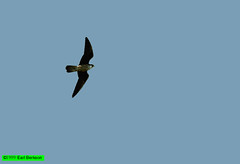The world is a mask that hides the real world.
Thatâs what everybody suspects, though the world we see wonât let us dwell on it long.
The world has ways - more masks - of getting our attention.
The suspicion sneaks in now and again, between the cracks of everyday existenceâ¦the bird song dips, rises, dips, trails off into blue sky silence before the note that would reveal the shape of a melody that, somehow, would tie everything together, on the verge of unmasking the hidden armature that frames this sky, this tree, this bird, this quivering green leaf, jewels in a crown.â¦
As the song dies, the secret withdraws.
The tree is a mask.
The sky is a mask.
The quivering green leaf is a mask.
The song is a mask.
The singing bird is a mask.
Friday, August 05, 2005
New Zealand stag attack
by Krista Hunter, Stuff, 5 August 2005
A brush with a death after being gored by a 200kg stag has Peter Foley armed with a lifetime of pub stories.
Only problem is, the doctor says he can't drink alcohol.
The Waimate District councillor yesterday spoke publicly for the first time about the attack on his Studholme farm nearly a month ago which nearly killed him.
From his Timaru Hospital bed, the straight-talking councillor recalled how he was weaning deer in the farm shed when suddenly one of the stags starting grinding his teeth and lunged forward.
Mr Foley was armed with a baffle board, but he slipped and the stag pierced deep into his thigh. The animal then continued to attack the unconscious farmer, piercing his chest several times.
The worst of the injuries pierced through the chest, missing the aorta and damaging the liver, kidney, and stomach.
"When I woke up I felt my gumboot was full of blood. It's all quite hazy, I must have been unconscious for up to half an hour.
"I got into my truck and drove home. I said to my wife Anne, 'I think I need a doctor'.
True to character, he stayed calm during the ordeal, and Mrs Foley said this helped her remain focused.
"Peter told me what to do. He said `take my gumboot off. Get me a duvet because I'm cold, and ring the doctor and ambulance.'
"The gumboot was full of blood and I didn't know where it was coming from."
Mr Foley lost consciousness when the ambulance to Timaru Hospital reached Makikihi.
His first few days in hospital were touch and go and he was in an induced coma. On day four Mr Foley thought he would die.
His two sons came home from Australia and America "to bury their father".
But Mrs Foley never believed her husband would die.
Looking back, Mr Foley said he was a "bloody fool" to be in the shed alone. Usually a mate helps him with the two-man job of weaning.
"I'm an idiot. I should have known better."
But it was late in the day, he had just returned from three weeks with his son in America, and the job needed doing.
Mr Foley said deer were volatile creatures. After 25 years working with the animals, he has had his fair share of scrapes and near misses.
The accident has convinced him to reduce the farm from 250 to 50 deer – much to the relief of Mrs Foley.
"Deer farming is a young person's game," she said.
The Foleys have full praise for the medical team who have looked after him. The couple are also thankful to the many people who have sent cards and letters of support.
Mr Foley is now up and about with the aid of a walking stick. He started on solid food three days ago which coincided with his first full night's sleep.
He's minus a kidney and has a railroad track of chest scars, but is expected to make a full recovery. He's looking forward to getting back around the council table.
And as for the alcohol, Mr Foley's getting another opinion.

Wednesday, August 03, 2005
eleonoras_falcon
the antarctic seems to be melting
Hamilton College news, 3 August 2005
The Antarctic Peninsula is undergoing greater warming than almost anywhere on Earth, a condition perhaps associated with human-induced greenhouse effects. According to the cover article published in the August 4 issue of the journal Nature, the spectacular collapse of the Antarctica's Larson B Ice Shelf, an area roughly the size of Rhode Island, is unprecedented during the past 10,000 years. Eugene Domack, professor of geosciences at Hamilton College and the author of the paper, has been the lead scientist of a multi-institutional, international effort that combines a variety of disciplines in examining the response of the Antarctic Peninsula to modern warming. Domack says, "Our work contributes to the understanding of these changes -- where they are occurring first and with greatest magnitude and impact upon the environment."
Domack's paper provides evidence that the break-up of the ice shelf was caused by a combination of long-term thinning (by a few tens of meters) over thousands of years and short term (multi-decadal) cumulative increases in surface air temperature that have exceeded the natural variation of regional climate during the Holocene period (the last 10,000 years since the end of the last Ice Age).
Using data collected from six sediment cores in the vicinity of the former ice shelf, Domack and his colleagues conclude that the Larsen ice shelf had been intact but was slowly thinning during the course of the current interglacial period. They attribute the recent collapse to the effects of climate warming in the Antarctic Peninsula, which is more pronounced in this region than elsewhere in Antarctica or the rest of the world. The Larsen B ice shelf is not alone in its demise. In recent years, the Antarctic Peninsula has lost ice shelves totaling over 4825 square miles.
Domack, who has taken more than 100 undergraduates to Antarctica since 1987, studies the paleohistory of the Larsen Ice Shelf. He was awarded $851,941 from the National Science Foundation Office of Polar Programs in 2004. Domack was a 2004 Guggenheim Fellow, a Joint Oceanographic Institutions 2000 Distinguished Lecturer and an invited speaker at over 20 international conferences including the 1999 American Association for the Advancement of Science annual meeting.
Collaborators on the project include researchers from Hamilton College; Colgate University, University of New Hampshire, Southern Illinois University - Carbondale, University of Barcelona and Queen's University in Kingston, Ontario.
will hunters do it again?
GAINESVILLE, Fla. — Prehistoric big game hunters and not the last ice age are the likely culprits in the extinction of giant ground sloths and other North American great mammals such as mammoths, mastodons and saber-toothed tigers, says a University of Florida researcher.
Determining whether the first arrival of humans or the warm-up of the American continent at the end of the last Ice Age was responsible for the demise of prehistoric sloths has puzzled scientists because both events occurred at the same time, about 11,000 years ago. But by using radiocarbon to date fossils from Cuba and Hispaniola, where humans appeared later than on the North American continent, long after the last Ice Age occurred, UF ornithologist David Steadman was able to separate the two events.
He and his colleagues found the last record of West Indian ground sloths coincided with the arrival of humans 4,400 years ago. The results are published in a Proceedings of the National Academy of Sciences paper this week.
“If climate were the major factor driving the extinction of ground sloths, you would expect the extinctions to occur at about the same time on both the islands and the continent since climate change is a global event,” Steadman said.
Gary Haynes, anthropology professor at the University of Nevada, Reno, said Steadman’s study “clearly shows that ground sloth extinctions in the New World didn’t happen after serious changes in climate or vegetation – and that the first appearance of humans must have been the decisive factor.”
The fossil record shows the people who arrived in North America were making sophisticated tools out of stone, bone and ivory, Steadman said. These “big-game hunters” had a traumatic effect on the animals living there, he said.
More than three-fourths of the large species of mammals that roamed the North American landscape became extinct within a few thousand years, which, besides ground sloths, included mammoths, mastodons, saber-toothed tigers and giant bears, Steadman said.
“It was as dramatic as the extinction of the dinosaurs 65 million years ago,” he said.
By understanding when, and to some extent how, ground sloths became extinct, scientists may be able to determine the biological potential of an area for restoration if human contact could be eliminated, such as in a national forest, a national park or an island, Steadman said.
“I’m not a Steven Spielberg type in that I don’t believe that DNA would bring these things back,” he said. “But in lieu of Jurassic Park, I think we can come up with sound ideas using the nearest living relatives. For example, we might want to consider taking living tree sloths and introducing them to protected forested areas on Cuba or Hispaniola.”
While the largest of the prehistoric ground sloths grew to the size of a modern elephant and fed on bushes and the leaves of lower branches of trees, today’s only surviving descendants are several small tree sloths whose range extends from southern Mexico to southern Brazil, he said.
Such an experiment might be similar to the one that involved restoring bison, once native to Florida, to Paynes Prairie Preserve State Park near Gainesville, Steadman said. “With the work we’re doing, especially on islands, to reconstruct which kinds of plants and animals — particularly birds and mammals — used to live there, we can open up possibilities for restoring parts of these islands to something near their original condition,” he said.
The only reason the living species of sloths survive is that they live high up in trees, where their green-algae-colored fur camouflages them, Steadman said. “God save the sloth that comes down to the ground because usually somebody is there to kill it,” he said.
For the study, Steadman sent samples from the large collection of ground sloth skeletons at the Florida Museum of Natural History on the UF campus, to Paul Martin, a professor emeritus of geosciences at the University of Arizona, for radiocarbon dating.
Steadman said he was not surprised to find that humans were more significant than changes in climate because most species of plants and animals can adjust to changes in temperature. However, the transition between the glacial and inter-glacial period, which resulted in shifts in habitat and the ranges of plants, may have made animal species more vulnerable than they otherwise would have been, he said.
“This is the first time it’s been demonstrated for West Indian ground sloths, and West Indian ground sloths are sort of the poster child of big extinct West Indian mammals,” he said. “I think this will go a long way to finally put to rest this whole idea that large extinct animals from the West Indies died out in the Ice Age during the Pleistocene Epoch.”
-30-
another Earth-raper milking the nature meme
by Jim Low, Kansas City InfoZine, 3 August 2005
A project that started as the solution to a problem has turned to fascination for workers at the New Madrid Power Plant.
New Madrid, Mo. - infoZine - A coal-fired power plant seems an unlikely place to find living symbols of wild nature, but that's how it is in this Missouri Bootheel town. The story of how a 1,200-megawatt power plant became home to a succession of peregrine falcons has its roots in a problem.
One of David Childers' jobs as materials management supervisor for the Associated Electric Coop's New Madrid Power Plant is to oversee pest-control. So, when pigeons took up residence there, multiplied out of control and began leaving runny white calling cards all over the plant, it became a problem he had to deal with.
And a tough problem it was. The size of the facility and the height of some of its structures made pigeon control next to impossible. Then Childers got a creative idea from Associated Electric's Director of Power Production, Duane Highley, in Springfield. Why not get falcons, which eat pigeons and other birds, to take care of the problem?
Highley had heard about other power plants along the Mississippi River combining conservation and pigeon management with good results. Childers, who is an avid outdoorsman, took the idea and ran with it. He personally built a nest box and had a maintenance crew mount it on the plant's emissions stack 27 stories up, hoping a passing falcon would spy the box, see the pigeons and-putting two and two together-find a nice girl falcon to settle down with him.
That was in 2001. When, after three years, the box still stood empty, Childers enlisted the Missouri Department of Conservation's assistance. Before long, Childers, his workers and Conservation Agent Rodney Ivie were playing nursemaids to four peregrine falcon hatchlings purchased from a breeder in Idaho.
The first clutch of three males and one female falcon survived. They never seemed entirely comfortable in their new home, though. They soared around the power plant for a few weeks after being released, but eventually all drifted away.
Some people might have been discouraged, but Childers and the rest of the New Madrid Power Plant staff were hooked. They had gotten to watch four of the world's most amazing predators grow from gawky infants to supreme rulers of the sky. They sparred in midair before spellbound audiences at break time. They were seen giving chase to a variety of birds.
The pigeons, understandably, were less enthusiastic. They made themselves scarce while the falcons were about.
Determined to secure the pigeon-discouraging services of a permanent falcon family, Childers and Co. brought in another group of four falcon chicks this year. The birds-another set of three males and one female-arrived in mid-June. By the end of the month they were entertaining power plant workers with displays of aerial prowess.
On a typical day, they workers look out the window and see a pair of young peregrine falcons grasping each other's talons in flight just outside plant windows, making forays over the Mississippi River or perched atop an 800-foot smokestack.
The power plant is, once again, not safe for pigeons. Four growing falcons are switching their voracious appetites from dead quail provided by their human surrogate parents to birds they catch on the wing.
Childers says he is optimistic about one of this year's falcon brood staying put.
"We gave these birds a few more days before we released them. The falcon project team is a lot more experienced now, and we have met the chicks' needs a little better. I have a good feeling that these birds have imprinted on the power plant. There is always a chance that last year's birds can still return with a mate, so now we have eight good chances for a permanent nesting pair here in the Bootheel.
Childers said the benefits of the falcon program go beyond pigeon control. At first, power plant employees were lukewarm to the idea of falcon restoration, but that changed dramatically when the birds arrived. As they grew and eventually took to the air, New Madrid Power Plant workers found themselves united in fascination with the birds.
"This is something that goes beyond our daily work routine," said Childers. "It's more than megawatts. The involvement in environmental stewardship is something we are all proud of. People stop you at church, in the grocery store or just about anywhere and ask 'How are the falcons doing.' It shows a commitment from Associated Electric to strive to maintain and improve the environment while providing an economical, reliable power supply to rural electric cooperatives. We've done that, so much so that once-endangered peregrine falcons can live within our plant site."
So, what began as a way of controlling pest pigeons has become a four-year walk on the wild side. Work will never be the same for Associated Electric employees who now watch the sky around the New Madrid Power Plant with a new sense of wonder.








